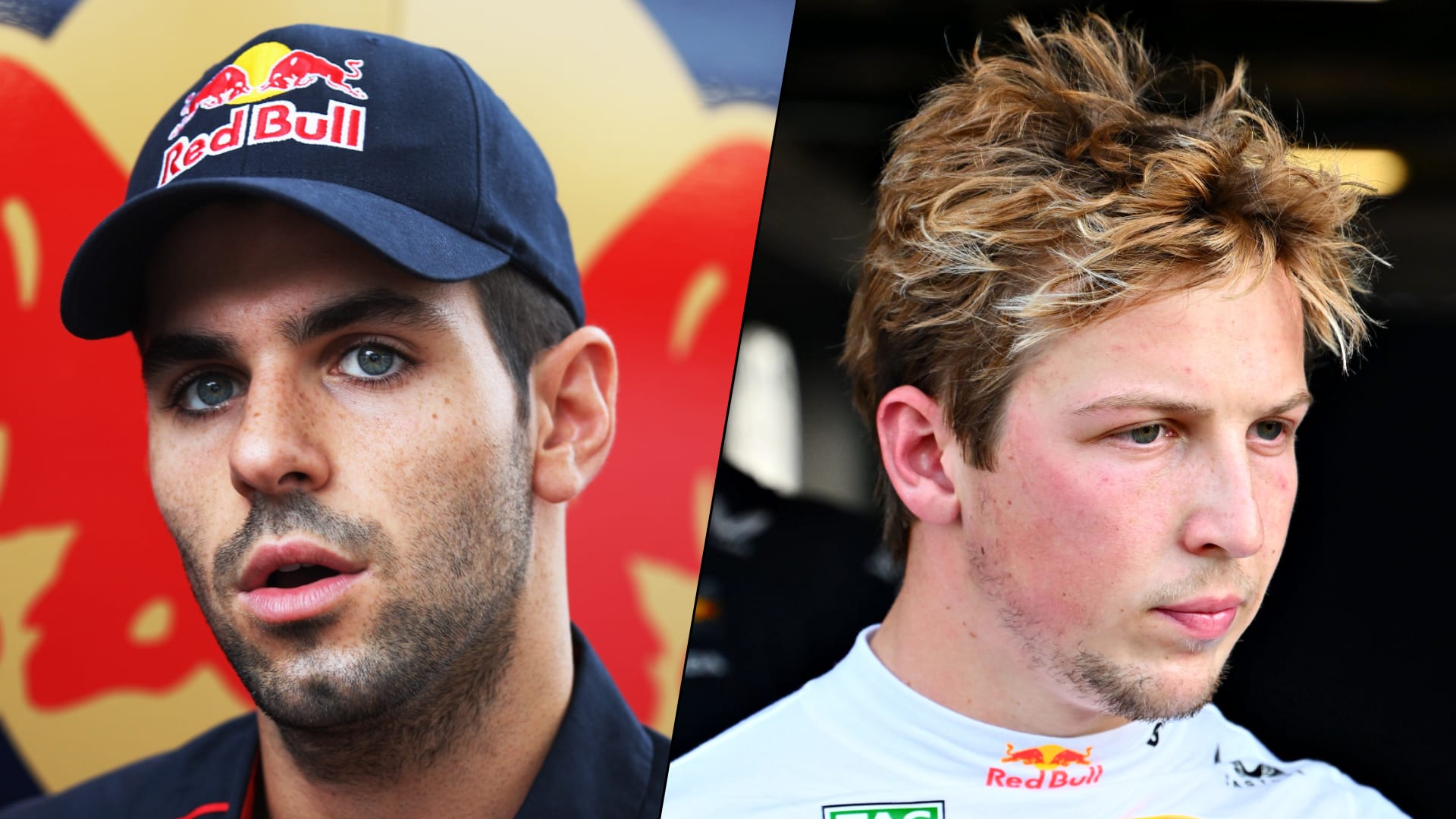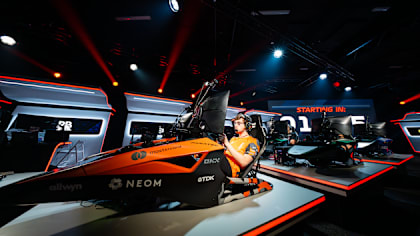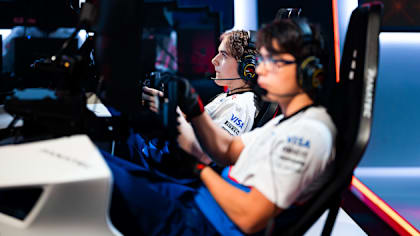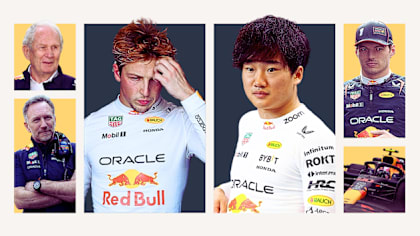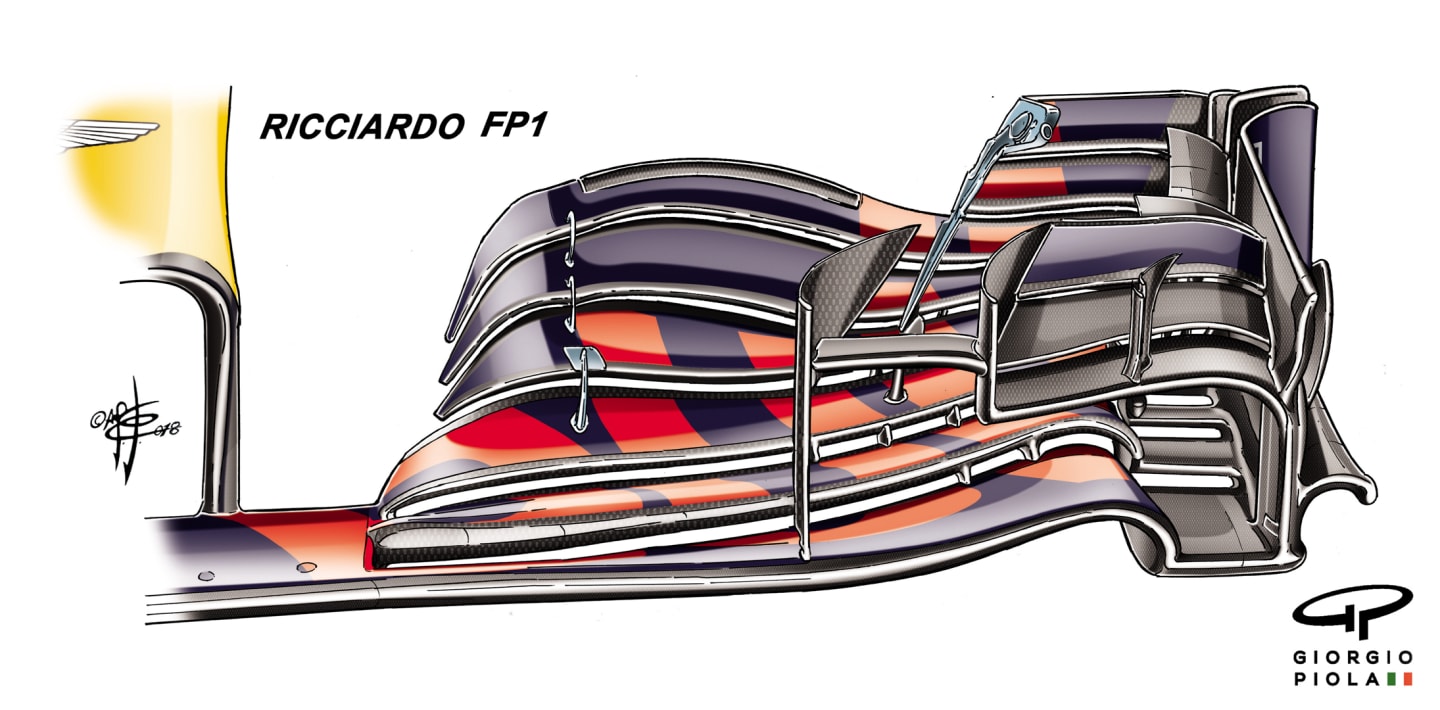
Technical
TECH TUESDAY: Red Bull’s power vs downforce conundrum

Share

Red Bull, so long heralded for having the best chassis on the grid, found themselves off the pace at Silverstone, their downforce advantage negated by the current spec of cars all being able to run flat-out through corners that previously would have exposed weaker chassis. So how do they get out of this one? Our tech team of Mark Hughes and Giorgio Piola investigate...
The recent power gains made by both Mercedes and Ferrari with their Spec-2 engines seem to have left Renault trailing further behind than at the start of the season. That was very much what the performance of the respective Mercedes, Ferrari and the Renault-powered Red Bull suggested at Silverstone, particularly in how relatively ineffective the low downforce levels chosen by Red Bull were in combatting their two rivals.
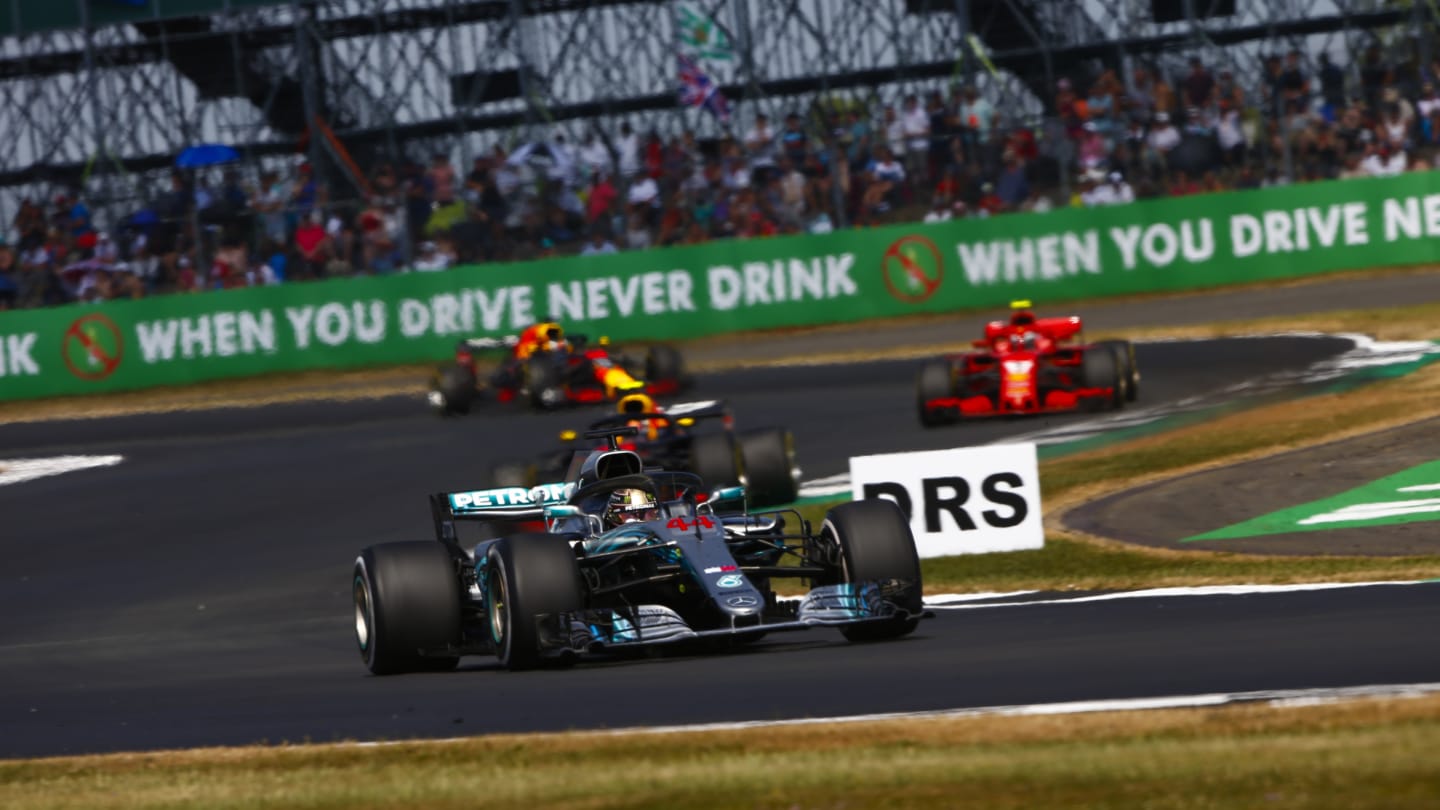
Mercedes debuted their Phase 2.1 motor at Paul Ricard in France. Sebastian Vettel’s Ferrari received its Spec 2 engine at the previous race in Canada. The boost to Mercedes was very apparent immediately and customer teams reckoned it was worth around 0.2s over the previous spec. Initially, the Ferrari engine update didn’t seem quite so potent, but since Austria, as Ferrari have established certain reliability factors, it has been run more aggressively. Silverstone suggested that it had a small but significant power advantage over even the Phase 2.1 Mercedes.
Renault produced their own updated spec in Montreal, but the gains were smaller – and on an engine that had already been behind the top two. Renault Sport plans to extract more from this specification once it has established specific reliability parameters, but at Silverstone it was essentially still running in Montreal spec, albeit with a new MGU-K.
Earlier in the season, Red Bull could run competitive race pace at circuits such as Bahrain and Shanghai even if the lack of a Renault qualifying mode meant they were out-gunned in Q3. With all the engines in race mode, the power shortfall was small enough that Red Bull could still compete. At Monaco, the least power-sensitive track on the calendar, the Red Bull was the fastest car even in qualifying.
But since the Ferrari and Mercedes power gains, on conventional tracks Red Bull no longer seem the force they were… even on Sundays. Before the Mercedes and Ferrari power upgrades, Red Bull would usually qualify between 0.8-1.0s clear of the ‘best of the rest’. Since those upgrades, their qualifying gap over the Ferrari-powered Haas has narrowed to around 0.2s.
At Silverstone, we saw made explicit what had been suggested at Barcelona: that the generic aerodynamic grip of this generation of cars has transformed corners that were previously differentiators between good and great chassis into, effectively, straights. This has lost Red Bull a previous area of advantage in those long, fast sections. Corners such as Abbey, Copse and Maggots at Silverstone are now flat-out for everyone.
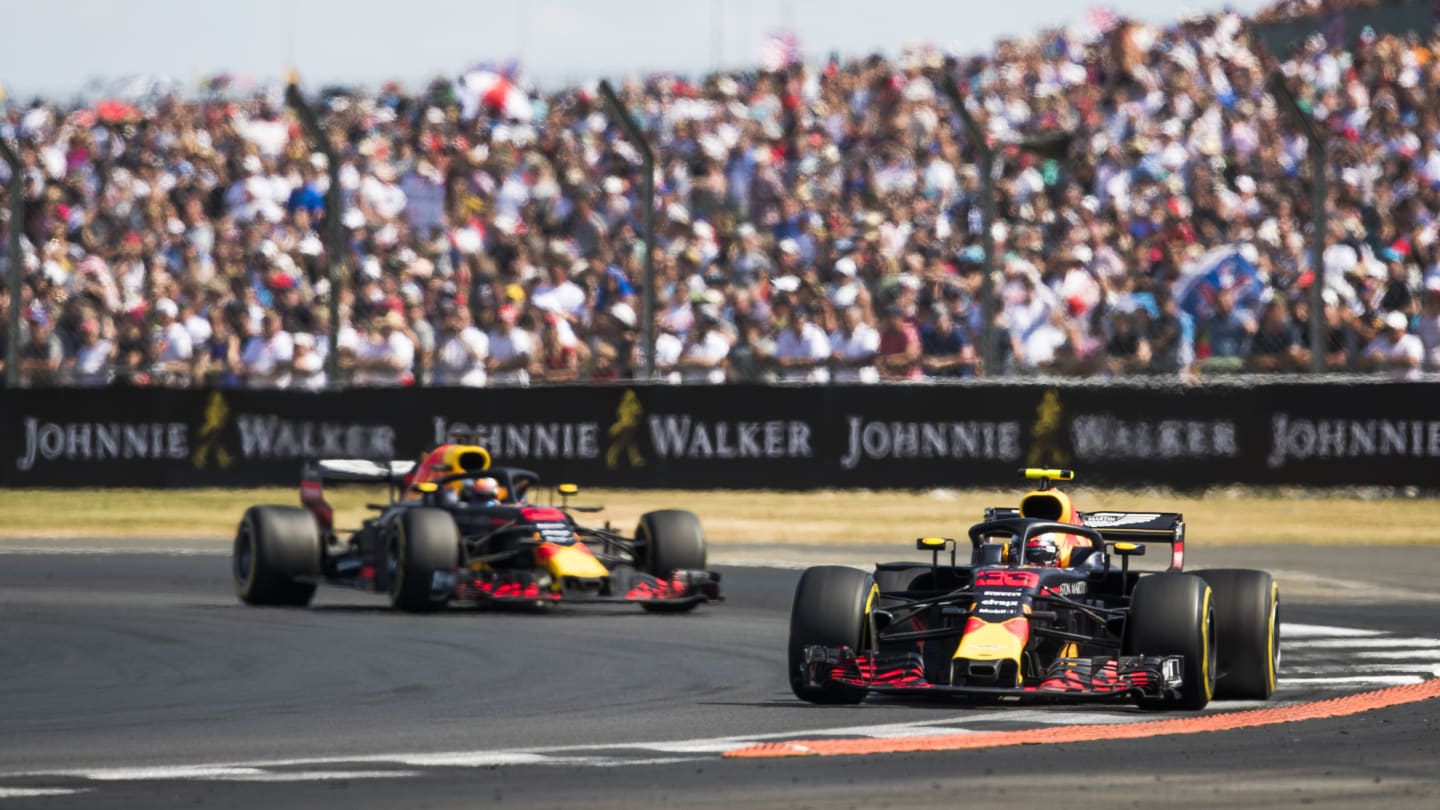
Previously, when such corners were merely very fast rather than literally flat-out, the Red Bull could often claw back lap time to the more powerful Mercedes and Ferraris. Now, those corners are worse than performance-neutral for Red Bull – they are actually losing time through them, and that’s partly a function of horsepower, as Christian Horner explained at Silverstone: “Our drivers are flat-in-top through them, but then the only thing that’s determining your speed through them is how much speed the tyre scrub is killing – and that’s where you really need the horsepower to power through.”
If the Red Bull still carries an inherent downforce advantage, it will not be rewarded through turns where everyone is flat. Furthermore, the power shortfall is now punished through such corners as well as down the straights.
Red Bull’s aerodynamic philosophy has always erred more towards total downforce than aerodynamic efficiency. Even back in the V8 era, their cars carried more drag at high speeds. Upper body downforce especially creates drag and as a generalisation, the more downforce generated by the wings and upper body, the greater the drag. There will be a crossover point where more downforce begins to cost more lap time than it brings. That point will vary according to the circuit – and also to the engine’s power. The more power, the more wing that can be carried before lap time starts to worsen.
Historically, because Red Bulls conceptually carried more downforce/drag than others – and because they have usually lagged on power – they have been run with lower wing levels. Silverstone suggested that this difference is becoming more extreme as the others surge ahead with their engine developments.
Daniel Ricciardo and Max Verstappen used two different low-downforce front wings to balance the low-downforce Baku-spec rear wings at Silverstone. The fact that one front wing wasn’t clearly superior to the other suggested that the team was struggling around the margins and running out of options to progress.
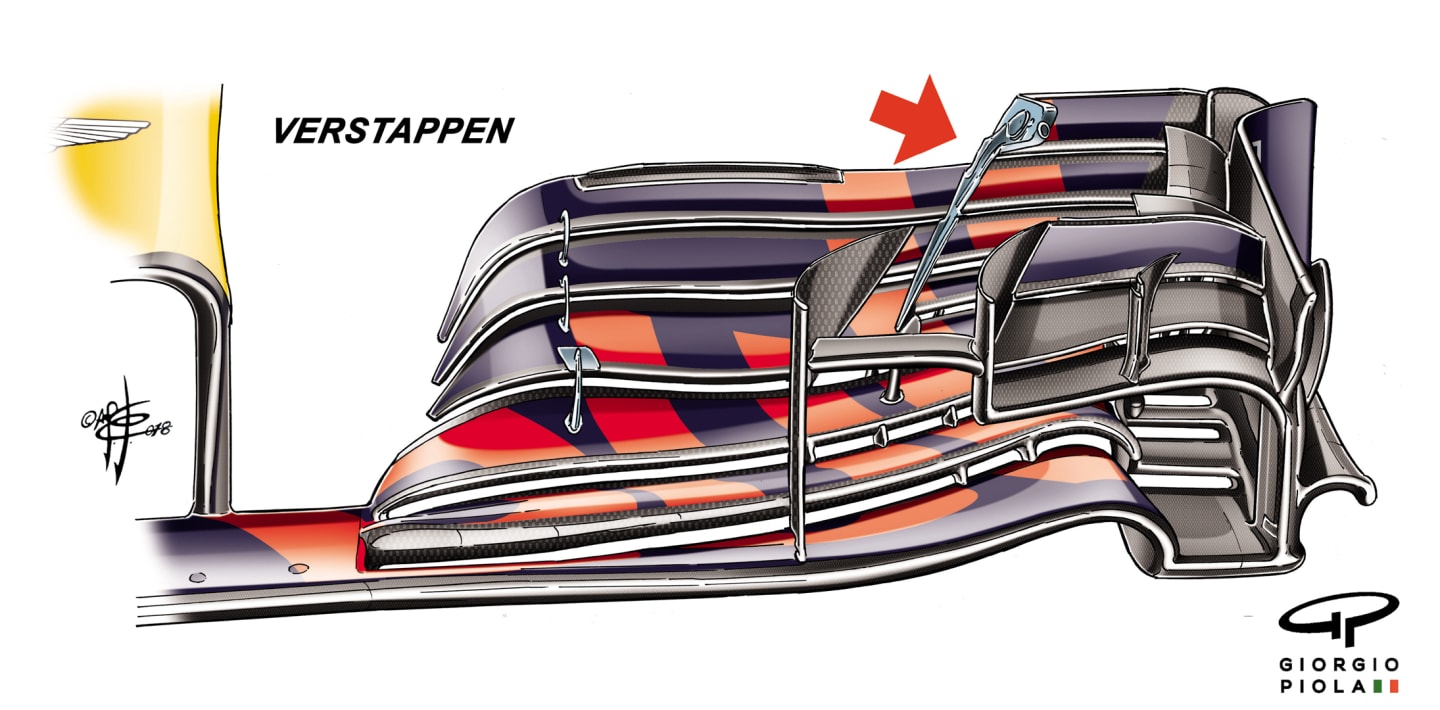
Verstappen used what was basically a Montreal-spec front wing (see image above) with relatively straight main planes and only a single, very short, outboard upper mini flap (as shown by the red arrow), its width cut back quite drastically from the conventional front wing seen at higher-downforce tracks.
Daniel Ricciardo tried two versions of a quite different wing, both with much more contoured and twisted main planes than the Verstappen wing and a double (rather than single) mini flap at the outboard ends. Although still a low-downforce wing, the enhanced area in the middle of the main planes given by the contouring, together with the extra mini flap, would suggest that it was configured to be not quite as low-downforce (and therefore low-drag) as the Verstappen wing.

Furthermore, on Friday Ricciardo tried this wing with a gurney flap (see image above) on the upper main element. This would work that part of the wing harder, though at the expense of some drag. But from Saturday onwards he ran without the gurney, as in the image below.
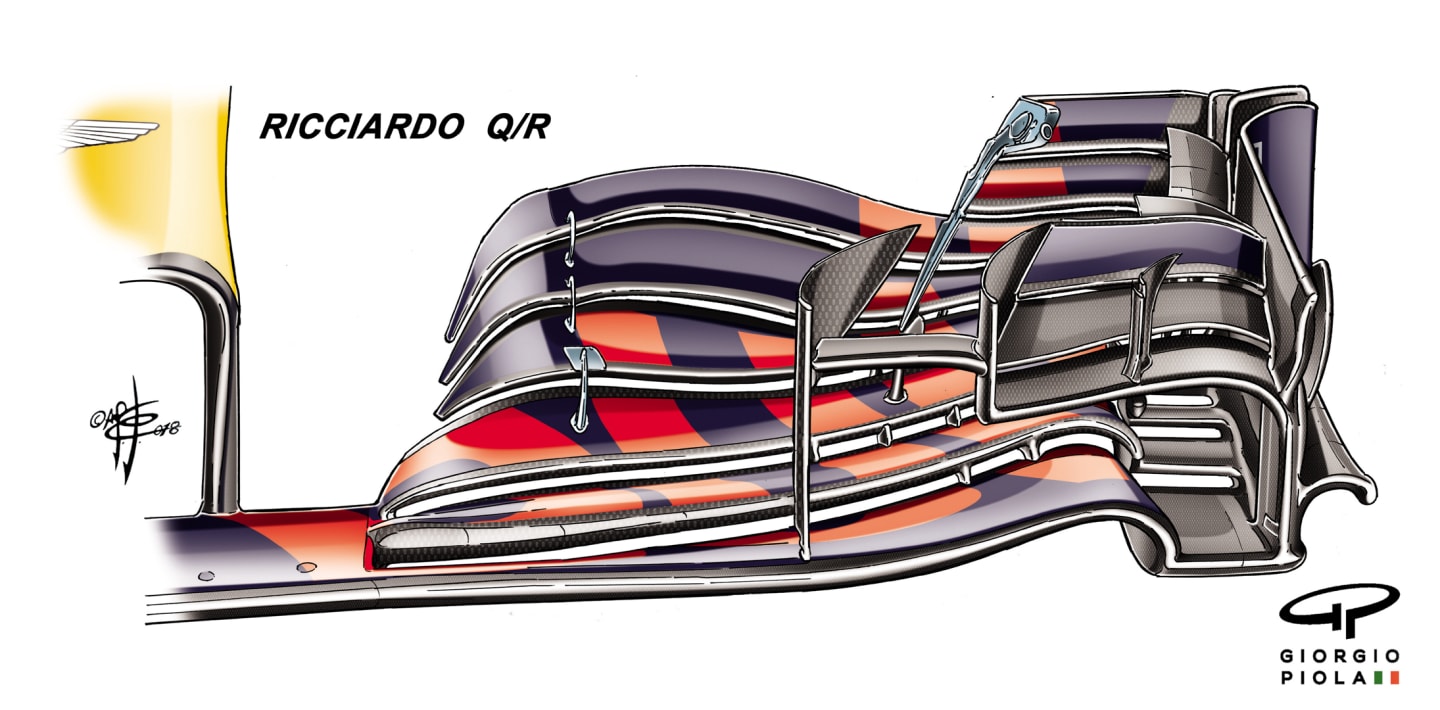
Both cars were a long way adrift of the Ferrari/Mercedes pace in the race and for Red Bull the extra power promised by Renault once they are satisfied with the upgraded spec’s reliability cannot come soon enough. The upcoming Hungaroring – relatively insensitive to power but sensitive to downforce – is traditionally a Red Bull track, but with the latest engine developments, even that may not now be a given.
YOU MIGHT ALSO LIKE
FeatureF1 Unlocked THIS WEEK IN F1: 10 quiz questions on the Chinese Grand Prix and the latest F1 news
Video LIVESTREAM: Watch all the Round 11 action from the 2025 F1 Sim Racing World Championship at the Lusail International Circuit
Video LIVESTREAM: Watch all the action from Round 10 of the 2025 F1 Sim Racing World Championship as the drivers tackle Interlagos
Feature ANALYSIS: Why Red Bull decided swift action was needed as Tsunoda is promoted in place of Lawson
